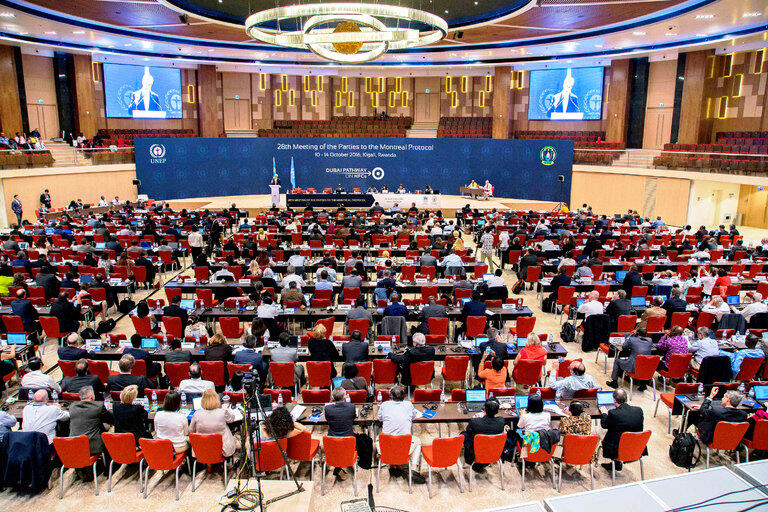At last, the use of the factory-made Hydrofluorocarbons (HCFs), which were shown to contribute to global warming thousands of times more than Carbon Dioxide (CO2), will be reduced by around 200 countries including the United States, China, in addition to many European Union and African countries. Countries committed to this deal, have to reduce “HCFs” gradually, starting with 10% reduction in 2019, and reaching 85% by 2036, in order to counter the climate change.
The Montreal Protocol in 1987 succeeded in limiting the use of Chlorofluorocarbons (CFCs) in refrigerators, air conditioners, hair sprays, etc. This protocol was targeted towards reducing the ozone depleting substances such as CFCs, since the ozone layer, as known nowadays by almost all people, protects the Earth from ultraviolet (UV) rays that cause skin cancer and other conditions. Therefore, CFCs were replaced by HCFs; these gases limit ozone layer depletion, but unfortunately, cause global warming since they retain heat much more than CO2. Also, the increasing demand on air conditioning, results in a 10 to 15% increase in the HCFs released per year, which further exacerbates the global warming effects of these gases.
Therefore, a negotiation took place in Rwanda, the capital of Kigali, between 170 developed and developing countries to reduce HCFs. And after four days of long discussions, they agreed on the legally binding Kigali deal.
The Kigali deal is characterized by being legal with specified timetables and deadlines, in addition to containing as agreement by which developed, rich countries will help developing, poor ones in adapting the new nature-friendly technology. It follows several measures against global warming that were taken previously, such as the “2015 Paris Agreement” to limit emissions that cause climate change.
The advantage of this measure, according to scientists, is immense since a quick reduction in HFCs could avoid the expected rise in temperature in 2100, which is estimated to be 0.5 degrees Celsius, equivalent to 0.9 Fahrenheit. This is vital, especially that environmental groups expect 1.6 billion new air conditioning units to be installed by 2050, which triggered them to ask for an urgent, ambitious agreement on cutting HFCs.
The countries were divided into three groups, each given a certain deadline to reduce the use of these major greenhouse gases, mainly used in refrigerators and air conditioners. Two groups that include the developing countries will freeze their use of the gases by either 2024 or 2028. Other countries such as India, Iran, Iraq, Pakistan and the Gulf countries asked for an extended deadline. The reasons behind this, is the need for air conditioning in the hot climates of some countries on one hand, and India’s fear on its economy on the other, where it is not willing to damage its growing industries since it is a major manufacturer of HCFs.
Here, it is vital to point out that, natural alternatives such as Ammonia and Hydrocarbons, are available, and refrigerators based on these coolants are offered in developed countries. Adding to this other replacement gases such as the short-lived refrigerant chemicals known as “Hydrofluoroolefins (HFOs)” will be available soon. Yet, these planet-friendly alternatives are expensive, which prompted both, governments and private donors, to offer $80 million to increase the rate of the transition from the heat-trapping coolants, to the environment-friendly ones.











